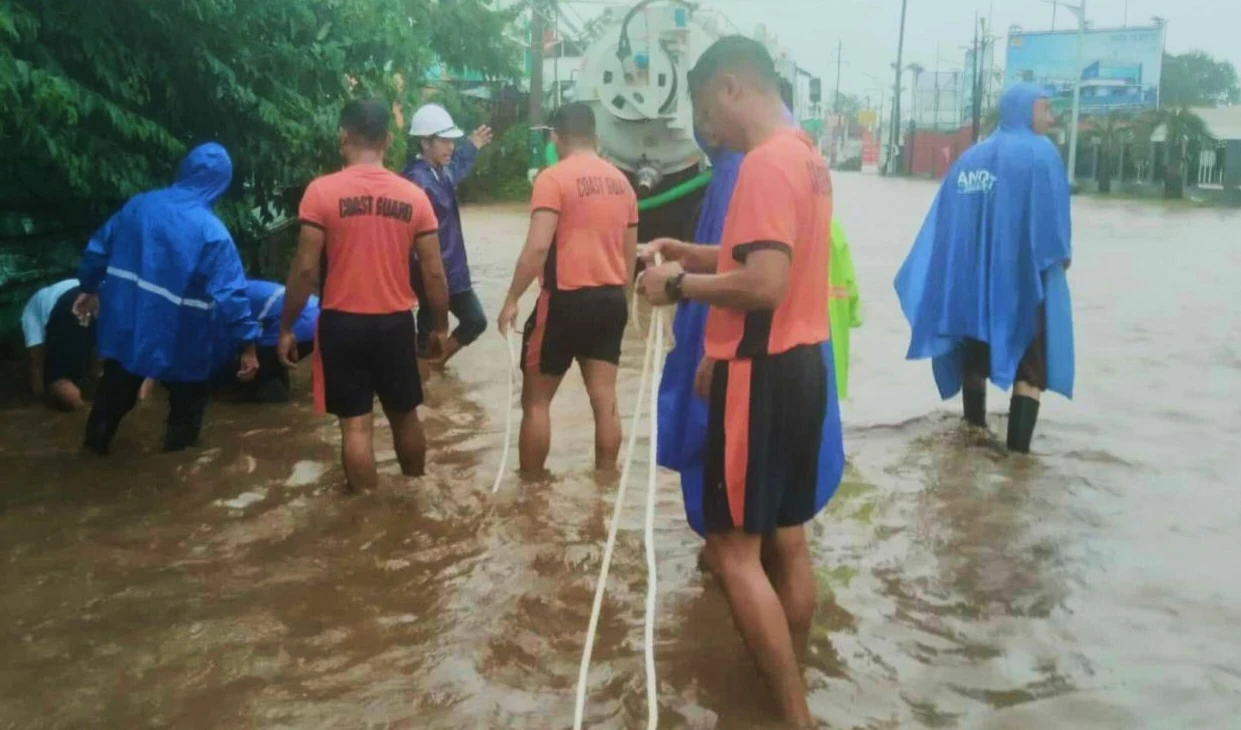Philippines typhoon: Over 100,000 evacuated as Fung-wong intensifies
Over 100,000 evacuated in the Philippines as Typhoon Fung-wong becomes a super typhoon, bringing torrential rain, floods, and strong winds.
-

Rescuers evacuate people to safer grounds in Quezon province, eastern Philippines, as Typhoon Fung-wong enters the country on Sunday, November 9, 2025. (Philippine Coast Guard via AP)
More than 100,000 people have been evacuated from eastern and northern parts of the Philippines as Typhoon Fung-wong intensified into a super typhoon on Sunday, hours before its expected landfall.
With sustained winds reaching 185 km/h and gusts up to 230 km/h, the tropical storm threatens to bring destructive winds, heavy rainfall, and dangerous storm surges to several regions.
Storm alerts have been issued across large areas of the country. Parts of Eastern Visayas are already experiencing power outages. According to the civil aviation authority, over 300 domestic and international flights have been cancelled in anticipation of severe weather conditions.
In Camarines Sur, images released by the Philippine coast guard showed evacuees with bags and personal belongings boarding trucks after disembarking from narrow passenger boats during preemptive evacuations.
Read more: Death toll from Typhoon Kalmaegi rises as storm heads toward Vietnam
In coastal Aurora province, where the typhoon is expected to make landfall late Sunday or early Monday, emergency crews are conducting door-to-door operations, urging residents to seek higher ground.
Authorities warn of heavy rain and possible flooding
Government meteorologist Benison Estareja said Typhoon Fung-wong may bring more than 200 mm of rain, raising concerns about widespread flooding.
“It’s also possible that our major river basins will overflow,” he warned during a briefing on Saturday.
The super typhoon arrived just days after Typhoon Kalmaegi struck the Philippines, claiming 204 lives before moving on to Vietnam, where it caused further destruction and fatalities.
In the province most affected by Kalmaegi, where nearly 70% of the casualties occurred, ongoing search and rescue operations were suspended due to the approaching storm.
Read more: US condemns China over alleged ramming of ship in disputed waters
“We were ordered to temporarily stop the search, rescue, and retrieval at 3 pm today,” rescue official Myrra Daven told AFP. “We cannot risk the safety of our rescuers. We don’t want them to be the next casualties.”
Daven noted that the number of missing persons, currently at 57 in the province, is likely to rise due to blocked access routes and unsearched areas.
Experts warn that such severe storms are becoming more frequent and intense due to the climate crisis. Warmer ocean temperatures enable typhoons to intensify rapidly, while a warmer atmosphere contributes to heavier rainfall.
Read more: Climate change doesn't cause storms, it strengthens them: Research

 3 Min Read
3 Min Read










